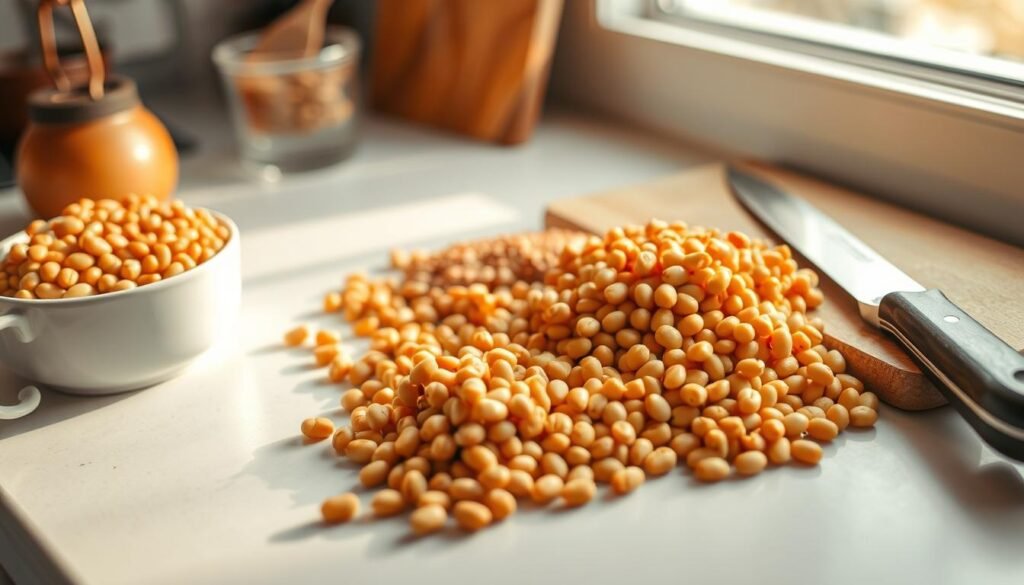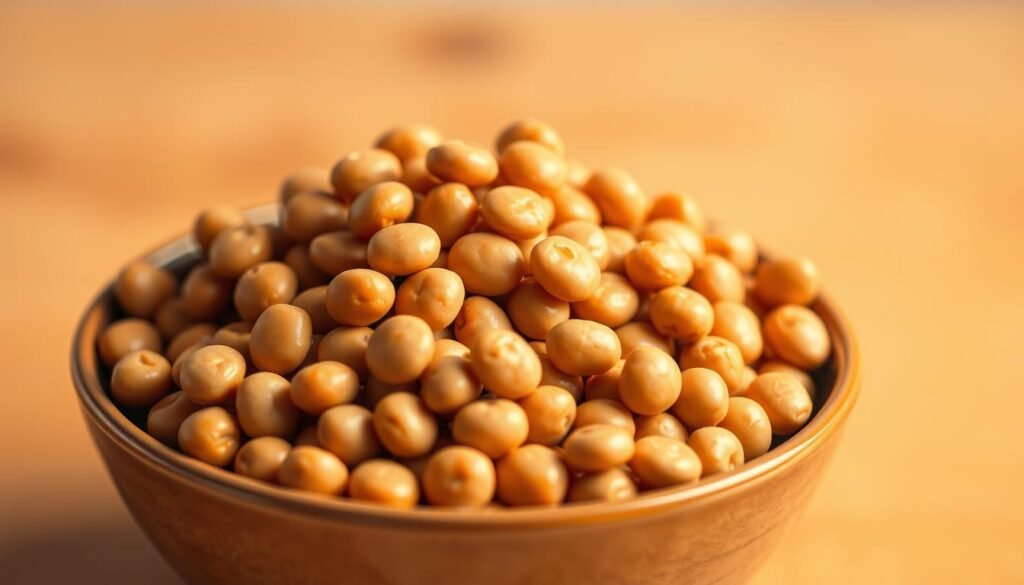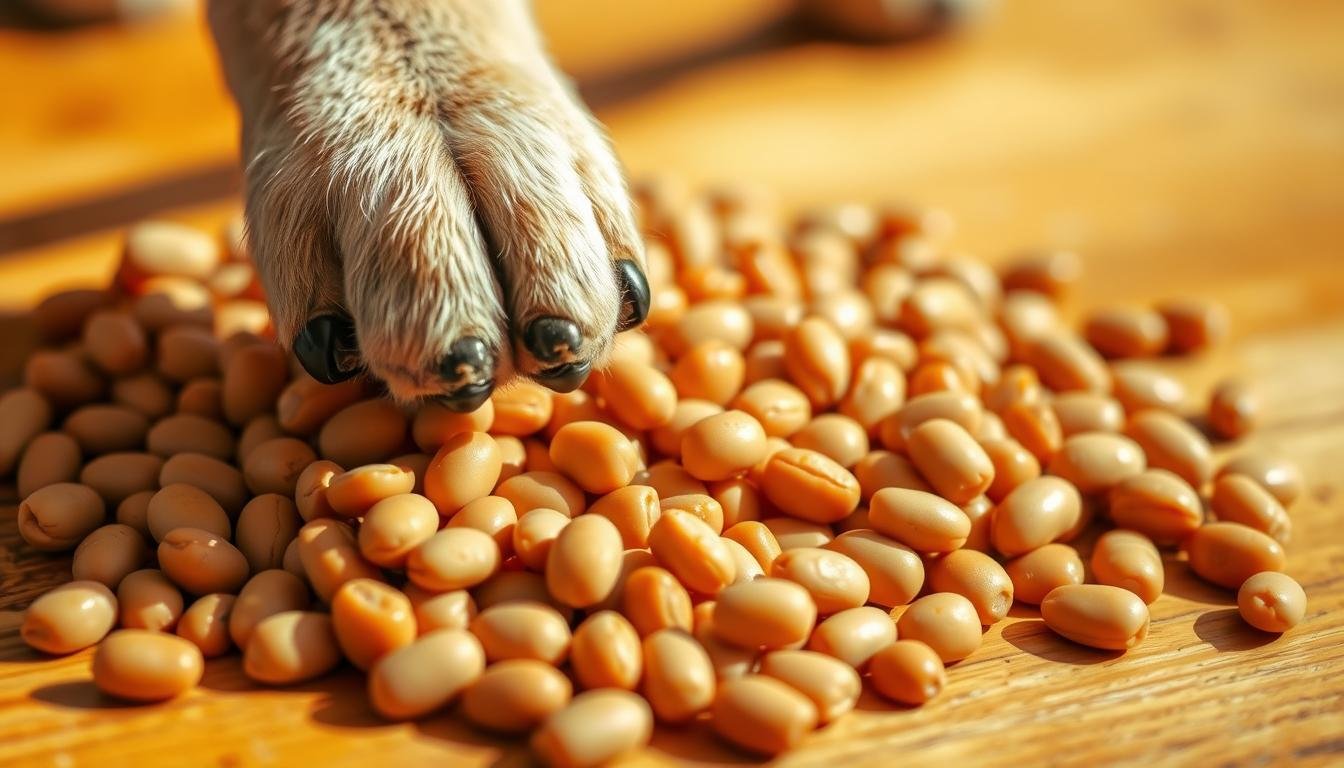When it comes to your furry friend’s diet, variety is key. Many pet parents look for healthy alternatives to traditional kibble, and pinto beans often come up as an option. But are they safe? The answer is yes—when prepared and served correctly.
Pinto beans are packed with essential nutrients like fiber, vitamins, and protein. These nutrients can support your dog’s overall health and add variety to their meals. However, moderation is crucial. Too much of any new food can lead to digestive issues.
Proper cooking methods are essential to eliminate harmful substances like lectins. Always consult your vet before introducing new foods to ensure they align with your pet’s dietary needs. This guide will walk you through the benefits, risks, and safe preparation tips for pinto beans.
Key Takeaways
- Pinto beans are safe for dogs when cooked and served in moderation.
- They provide essential nutrients like fiber, vitamins, and protein.
- Proper cooking eliminates harmful substances like lectins.
- Consult your vet before adding new foods to your dog’s diet.
- Portion control is key to avoiding digestive issues.
Understanding Pinto Beans as a Dog Food Ingredient
Pinto beans are a nutrient-rich addition to your pet’s meals. They are packed with essential nutrients that can support your dog’s overall health. When prepared correctly, they can be a valuable part of a balanced diet.
Nutritional Profile of Pinto Beans
Pinto beans are an excellent source of plant-based protein, providing around 9 grams per half-cup serving. They also contain 7 grams of dietary fiber, which aids digestion and promotes bowel regularity. Additionally, they offer a steady release of energy with 27 grams of carbohydrates per serving.
These beans are rich in essential minerals like iron, magnesium, and potassium. For example, a half-cup serving provides 10% of the daily value for iron, supporting red blood cell production. They also contain B-vitamins like folate and thiamine, which are crucial for cell growth and energy metabolism.
Essential Vitamins and Minerals
Pinto beans are a powerhouse of nutrients. They include folate, which supports cell development, and thiamine, essential for energy production. Antioxidants in these beans help reduce oxidative stress, promoting overall health.
- Folate: Supports cell growth and development.
- Thiamine: Aids in energy metabolism.
- Antioxidants: Reduce oxidative stress and support immunity.
When combined with balanced dog food, pinto beans can enhance your pet’s nutrition. For more details on safely incorporating them into your dog’s meals, visit this guide.
Can Dogs Eat Pinto Beans? Safety Guidelines

Ensuring your pet’s meals are safe and nutritious is a top priority for every owner. While pinto beans can be a good source of nutrients, proper preparation and portion control are essential to avoid health risks.
Proper Cooking and Preparation Tips
Thoroughly cooking pinto beans is crucial to eliminate harmful substances like lectins. Raw or undercooked beans can cause digestive discomfort and other health issues. Follow these steps for safe preparation:
- Soak dried beans overnight to reduce cooking time and improve digestibility.
- Boil or steam the beans until they are soft and fully cooked.
- Avoid adding seasoning, salt, or additives that can harm your pet’s system.
Always opt for unsalted varieties if using canned beans, as high sodium levels can be harmful.
Risks of Overfeeding and Digestive Concerns
While pinto beans offer benefits, overfeeding can lead to issues like gas, bloating, and constipation. Start with small portions, such as 1-2 tablespoons, and monitor your pet’s reaction. Gradually increase the amount if no adverse effects are observed.
“Introducing new foods slowly helps your pet’s digestive system adjust without discomfort.”
Consult your vet if your pet shows signs of digestive distress or allergies. Remember, beans should only make up a small portion of your pet’s diet—no more than 10%.
| Portion Size | Cooking Method | Frequency |
|---|---|---|
| 1-2 tablespoons | Boiled or steamed | Occasional treat |
| Small handful | Soaked and cooked | Once or twice a week |
Benefits of Pinto Beans in Your Dog’s Diet

Incorporating nutrient-rich foods into your pet’s diet can significantly enhance their overall health. Pinto beans, when prepared correctly, offer a range of benefits that support digestion, energy, and more. Let’s explore how these legumes can be a valuable addition to your pet’s meals.
Supporting Digestive Health and Fiber Intake
Pinto beans are an excellent source of dietary fiber, with about 7 grams per half-cup serving. This fiber aids in digestion, promoting bowel regularity and reducing the risk of constipation. Regular fiber intake also supports the production of fatty acids, which suppress harmful bacteria in the gut.
For pets with sensitive stomachs, introducing pinto beans gradually can help control digestive issues. Start with small portions and monitor their response to ensure a smooth transition.
Promoting Low-Cholesterol and Energy Levels
These legumes are naturally low fat, making them a heart-healthy choice for your pet. The absence of cholesterol in pinto beans helps maintain healthy blood pressure and reduces the risk of cardiovascular issues.
Pinto beans also provide a steady release of energy due to their high-quality protein and complex carbohydrates. This combination helps sustain energy levels throughout the day, keeping your pet active and vibrant.
“A balanced diet with nutrient-rich foods like pinto beans can significantly improve your pet’s quality of life.”
| Benefit | Key Nutrient | Impact |
|---|---|---|
| Digestive Health | Fiber | Promotes bowel regularity |
| Low Cholesterol | No Cholesterol | Supports heart health |
| Sustained Energy | Protein & Carbs | Keeps energy levels stable |
Including pinto beans as part of a balanced diet can be a smart choice for pet owners. Their nutritional profile supports the immune system, aids digestion, and provides lasting energy. Always remember to prepare them properly and serve in moderation to maximize their benefits.
Incorporating Pinto Beans into Your Dog’s Meal Plan
Adding variety to your pet’s meals can boost their health and happiness. Pinto beans, when prepared correctly, can be a nutritious addition to their diet. However, it’s essential to balance them with other ingredients to ensure your pet receives a well-rounded nutrition plan.
Pairing Pinto Beans with Other Dog-Friendly Foods
Combining pinto beans with vegetables like carrots, peas, or green beans can enhance their nutritional value. These pairings provide a mix of vitamins, minerals, and fiber, supporting your pet’s overall health. Avoid adding seasonings or high-sodium ingredients to keep the meal safe.
For a balanced dog diet, consider mixing pinto beans with lean proteins like chicken or turkey. This combination ensures your pet gets the essential nutrients they need without overloading on any single ingredient.
Portion Control and Frequency Recommendations
Portion control is crucial when introducing new foods. Start with small amounts, such as 1-2 tablespoons, and monitor your pet’s reaction. Gradually increase the portion if no digestive issues arise.
Pinto beans should make up no more than 10% of your pet’s weekly diet. Overfeeding can lead to gas, bloating, or other digestive concerns. Always consult your vet for personalized advice based on your pet’s size and health needs.
“A balanced approach to meal planning ensures your pet stays healthy and happy.”
| Pet Size | Portion Size | Frequency |
|---|---|---|
| Small | 1-2 tablespoons | 2-3 times a week |
| Large | 1/4 – 1/2 cup | 2-3 times a week |
By following these guidelines, you can safely incorporate pinto beans into your pet’s meals. This approach supports a diverse dog diet, promotes stable energy levels, and enhances overall well-being.
Conclusion
Including nutrient-rich additions like pinto beans in your pet’s meal plan can offer significant health benefits. These legumes support digestion, provide low-fat energy, and enhance nutritional diversity. However, moderation and proper preparation are key to avoiding potential problems.
Always cook beans thoroughly to eliminate harmful substances and avoid adding salt or seasonings. Start with a small amount and gradually increase if no adverse reactions occur. Consulting your vet ensures the new addition aligns with your pet’s dietary needs.
For more detailed guidance on safely incorporating pinto beans into your pet’s diet, visit this resource. A balanced approach to pet nutrition can significantly improve their overall well-being.




